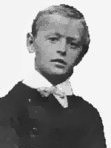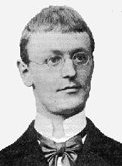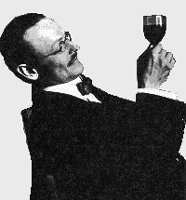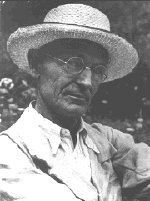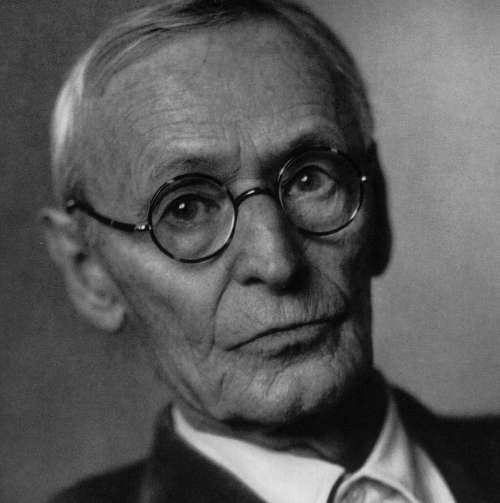HISTORIC OVERVIEW
Originated in China, Wushu is timehonored, rich in content and diversified in forms. The origin of Wushu can be traced back to the early activities of the ancestors who struggled hard for survival.
During the
cold weaponry age Wushu was employed by the army to subdue the enemy, practiced by the ordinary people as a means for selfdefense and physical training, as well as for a cheerful life. During the process of improvement and development in modern times, Wushu has been basically separated from military skills.
With attack and defense as its basic movements, Wushu has become a sports event which includes Taolu and Sanda disciplines. The International Wushu Federation (IWUF) was established on October 3, 1990 in Beijing (China) the location of its headquarters
During the
cold weaponry age Wushu was employed by the army to subdue the enemy, practiced by the ordinary people as a means for selfdefense and physical training, as well as for a cheerful life. During the process of improvement and development in modern times, Wushu has been basically separated from military skills.
With attack and defense as its basic movements, Wushu has become a sports event which includes Taolu and Sanda disciplines. The International Wushu Federation (IWUF) was established on October 3, 1990 in Beijing (China) the location of its headquarters
IWUF International Wushu Federation
No. 3 Anding Road
Chaoyang
Beijing
China
Chaoyang
Beijing
China
phone: +8610 6491 2153
fax: +8610 6491 2151
fax: +8610 6491 2151
Press contact:
Zhang Yuping
Zhang Yuping

BRIEF OUTLINE OF THE RULES
TAOLU
Originated in China, Wushu is time-honored, rich in content and diversified in forms. The origin of Wushu can be traced back to the early activities of the ancestors who struggled hard for survival.
During the cold weaponry age Wushu was employed by the army to subdue the enemy, practiced by the ordinary people as a means for selfdefense and physical training, as well as for a cheerful life. During the process of improvement and development in modern times, Wushu has been basically separated from military skills. With attack and defense as its basic movements, Wushu has become a sports event which includes Taolu and Sanda disciplines.
The International Wushu Federation (IWUF) was established on October 3, 1990 in Beijing (China) the location of its headquarters.
During the cold weaponry age Wushu was employed by the army to subdue the enemy, practiced by the ordinary people as a means for selfdefense and physical training, as well as for a cheerful life. During the process of improvement and development in modern times, Wushu has been basically separated from military skills. With attack and defense as its basic movements, Wushu has become a sports event which includes Taolu and Sanda disciplines.
The International Wushu Federation (IWUF) was established on October 3, 1990 in Beijing (China) the location of its headquarters.
SANDA
Sanda is a fighting method that combines full-contact kickboxing, which include punches and kicks, with wrestling,
takedowns, throws, sweeps, kick catches, and in some competitions, even elbow and knee strikes. Sanda competition may be divided into team event and individual event. Athletes are grouped by their weight categories. Sanda competition shall be conducted under the round-robin or elimination system. Each bout consists of three two-minute rounds with a oneminute rest in between. A bout is won by the best two of three rounds.
takedowns, throws, sweeps, kick catches, and in some competitions, even elbow and knee strikes. Sanda competition may be divided into team event and individual event. Athletes are grouped by their weight categories. Sanda competition shall be conducted under the round-robin or elimination system. Each bout consists of three two-minute rounds with a oneminute rest in between. A bout is won by the best two of three rounds.
MOST IMPORTANT ATHLETES
Men
Taolu
Jia Rui (Macau)
Huang Guangyuan (CHN)
He Jingde (HKG)
Nguyen Thanh Tung (VIE)
Wu Yanan (CHN)
Huang Guangyuan (CHN)
He Jingde (HKG)
Nguyen Thanh Tung (VIE)
Wu Yanan (CHN)
Sanda
Salikov Muslim (RUS)
Hamidreza Gholipour (IRI)
Sajjad Abbasiamir (IRI)
Benjie Rivera (PHI)
Li Kang (CHN)
Hamidreza Gholipour (IRI)
Sajjad Abbasiamir (IRI)
Benjie Rivera (PHI)
Li Kang (CHN)
Women
Taolu
Elif Akyüz (TUR)
Chai Fong Ying (MAS)
Tatiana Ivshina (RUS)
Lin Fan (CHN)
Erika Kojima (JPN)
Chai Fong Ying (MAS)
Tatiana Ivshina (RUS)
Lin Fan (CHN)
Erika Kojima (JPN)
Sanda
Qiu Tiao (CHN)
Mary Jane Estimar (PHI)
Pooja Kaddian (IND)
Sarah Belala (FRA)
Jiang Xianting (CHN)
Mary Jane Estimar (PHI)
Pooja Kaddian (IND)
Sarah Belala (FRA)
Jiang Xianting (CHN)
MOST SUCCESSFUL NATIONS
CHN, IRI, RUS, PHI, TUR, HKG, Macau, MAS, VIE, JPN, EGY
TRIVIA
In its age-long process of development wushu has been referred to as martial arts, as well as “gongfu” or “kungfu” in some areas.

.jpg)
.jpg)


















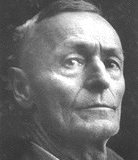
 Novelista y poeta alemán, nacionalizado suizo. A su muerte, se convirtió en una figura de culto en el mundo occidental, en general, por su celebración del misticismo oriental y la búsqueda del propio yo. Hesse nació el 2 de julio de 1877 en Calw, Alemania. Hijo de un antiguo misionero, ingresó en un seminario, pero pronto abandonó la escuela; su rebeldía contra la educación formal la expresó en la novela Bajo las ruedas (1906). En consecuencia, se educó él mismo a base de lecturas. De joven trabajó en una librería y se dedicó al periodismo por libre, lo que le inspiró su primera novela, Peter Camenzind (1904), la historia de un escritor bohemio que rechaza a la sociedad para acabar llevando una existencia de vagabundo. Durante la I Guerra Mundial, Hesse, que era pacifista, se trasladó a Montagnola, Suiza; se hizo ciudadano suizo en 1923. La desesperanza y la desilusión que le produjeron la guerra y una serie de tragedias domésticas, y sus intentos por encontrar soluciones, se convirtieron en el asunto de su posterior obra novelística. Sus escritos se fueron enfocando hacia la búsqueda espiritual de nuevos objetivos y valores que sustituyeran a los tradicionales, que ya no eran válidos. Demian (1919), por ejemplo, estaba fuertemente influenciada por la obra del psiquiatra suizo Carl Jung, al que Hesse descubrió en el curso de su propio (breve) psicoanálisis. El tratamiento que el libro da a la dualidad simbólica entre Demian, el personaje de sueño, y su homólogo en la vida real, Sinclair, despertó un enorme interés entre los intelectuales europeos coetáneos (fue el primer libro de Hesse traducido al español, y lo hizo Luis López Ballesteros en 1930). Las novelas de Hesse desde entonces se fueron haciendo cada vez más simbólicas y acercándose más al psicoanálisis. Por ejemplo, Viaje al Este (1932) examina en términos junguianos las cualidades míticas de la experiencia humana. Siddharta (1922), por otra parte, refleja el interés de Hesse por el misticismo oriental —el resultado de un viaje a la India—; es una lírica novela corta de la relación entre un padre y un hijo, basada en la vida del joven Buda. El lobo estepario (1927) es quizás la novela más innovadora de Hesse. La doble naturaleza del artista-héroe —humana y licantrópica— le lleva a un laberinto de experiencias llenas de pesadillas; así, la obra simboliza la escisión entre la individualidad rebelde y las convenciones burguesas, al igual que su obra posterior Narciso y Goldmundo (1930). La última novela de Hesse, El juego de abalorios (1943), situada en un futuro utópico, es de hecho una resolución de las inquietudes del autor. También en 1952 se han publicado varios volúmenes de su poesía nostálgica y lúgubre. Hesse, que ganó el Premio Nobel de Literatura en 1946, murió el 9 de agosto de 1962 en Suiza. ©
Novelista y poeta alemán, nacionalizado suizo. A su muerte, se convirtió en una figura de culto en el mundo occidental, en general, por su celebración del misticismo oriental y la búsqueda del propio yo. Hesse nació el 2 de julio de 1877 en Calw, Alemania. Hijo de un antiguo misionero, ingresó en un seminario, pero pronto abandonó la escuela; su rebeldía contra la educación formal la expresó en la novela Bajo las ruedas (1906). En consecuencia, se educó él mismo a base de lecturas. De joven trabajó en una librería y se dedicó al periodismo por libre, lo que le inspiró su primera novela, Peter Camenzind (1904), la historia de un escritor bohemio que rechaza a la sociedad para acabar llevando una existencia de vagabundo. Durante la I Guerra Mundial, Hesse, que era pacifista, se trasladó a Montagnola, Suiza; se hizo ciudadano suizo en 1923. La desesperanza y la desilusión que le produjeron la guerra y una serie de tragedias domésticas, y sus intentos por encontrar soluciones, se convirtieron en el asunto de su posterior obra novelística. Sus escritos se fueron enfocando hacia la búsqueda espiritual de nuevos objetivos y valores que sustituyeran a los tradicionales, que ya no eran válidos. Demian (1919), por ejemplo, estaba fuertemente influenciada por la obra del psiquiatra suizo Carl Jung, al que Hesse descubrió en el curso de su propio (breve) psicoanálisis. El tratamiento que el libro da a la dualidad simbólica entre Demian, el personaje de sueño, y su homólogo en la vida real, Sinclair, despertó un enorme interés entre los intelectuales europeos coetáneos (fue el primer libro de Hesse traducido al español, y lo hizo Luis López Ballesteros en 1930). Las novelas de Hesse desde entonces se fueron haciendo cada vez más simbólicas y acercándose más al psicoanálisis. Por ejemplo, Viaje al Este (1932) examina en términos junguianos las cualidades míticas de la experiencia humana. Siddharta (1922), por otra parte, refleja el interés de Hesse por el misticismo oriental —el resultado de un viaje a la India—; es una lírica novela corta de la relación entre un padre y un hijo, basada en la vida del joven Buda. El lobo estepario (1927) es quizás la novela más innovadora de Hesse. La doble naturaleza del artista-héroe —humana y licantrópica— le lleva a un laberinto de experiencias llenas de pesadillas; así, la obra simboliza la escisión entre la individualidad rebelde y las convenciones burguesas, al igual que su obra posterior Narciso y Goldmundo (1930). La última novela de Hesse, El juego de abalorios (1943), situada en un futuro utópico, es de hecho una resolución de las inquietudes del autor. También en 1952 se han publicado varios volúmenes de su poesía nostálgica y lúgubre. Hesse, que ganó el Premio Nobel de Literatura en 1946, murió el 9 de agosto de 1962 en Suiza. © 